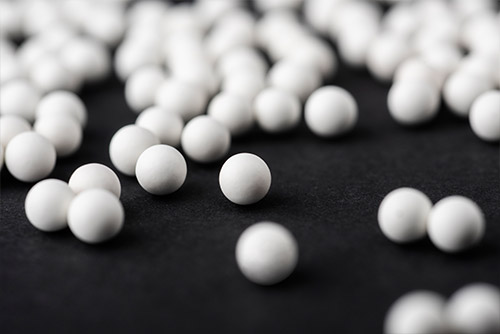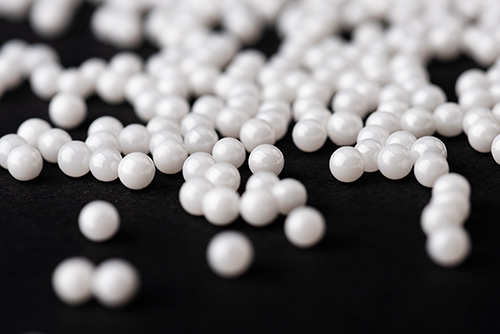In the realm of precision materials, the disparity between zirconium silicate beads and zirconium oxide beads unveils itself through crucial factors like density, bulk density, hardness, and physical attributes.
Zirconium silicate beads present a milky white appearance, occasionally tinged with a reddish hue. Devoid of luster, these beads exhibit a rough surface texture. For a visual representation, refer to the image below:Insert Image: Zirconium Silicate Beads

In stark contrast, ceramic zirconia silicate beads boast a smooth, pearl-like surface and an overall white coloration. A visual illustration can be found in the image below:Insert Image: Ceramic Zirconia Silicate Beads
Commonly known as yttria-stabilized zirconium oxide beads, these beads showcase a smooth, pearl-like surface and a pristine white coloration. Explore the visual contrast in the image below:Insert Image: Yttria-Stabilized Zirconium Oxide Beads

Another variant in the zirconium oxide family, ceramic zirconia beads share the smooth, pearl-like surface but differ in applications. Refer to the image below for an insightful comparison:Insert Image: Ceramic Zirconia Beads
Density: 4.0
Bulk Density: 2.4
Composition: Approximately 65% zirconium, 35% Si2O3
Mohs Hardness: 8
Applications: Widely utilized in industries like calcium carbonate, kaolin, titanium dioxide, pigments, and more. Also suitable for shot blasting, metal surface shot peening, and mineral grinding.
Despite their versatility, zirconium silicate beads are not highly wear-resistant and may be prone to fragility.
Composition: Approximately 94.8% zirconium, 5.2% yttria (Y2O3)
Density: 6.0
Bulk Density: 3.6
Superior Wear Resistance: 30-50 times that of glass beads, 5 times that of zirconium silicate beads, and 6-8 times that of aluminum oxide beads.
Extended Service Life: Cost-effective due to prolonged durability.
Widely employed in industries involving grinding and dispersion processes, including but not limited to calcium carbonate, kaolin, zirconium silicate, and pigments. Additionally utilized in shot blasting, metal surface shot peening, and mineral grinding applications.
Find applications in diverse industries such as MLCC (Multi-Layer Ceramic Capacitors), electronics, ceramic pastes, silicon carbide, ITO targets, carbon nanotubes, and more.
In conclusion, understanding the nuances between zirconium silicate beads and zirconium oxide beads is pivotal for making informed decisions in various industrial applications. Whether prioritizing wear resistance or seeking cost-effective solutions, the choice between these two materials can significantly impact performance and efficiency.

Submit your demand,
we will contact you ASAP.

Sanxin New Materials Co., Ltd. focus on producing and selling ceramic beads and parts such as grinding media, blasting beads, bearing ball, structure part, ceramic wear-resistant liners, Nanoparticles Nano Powder

